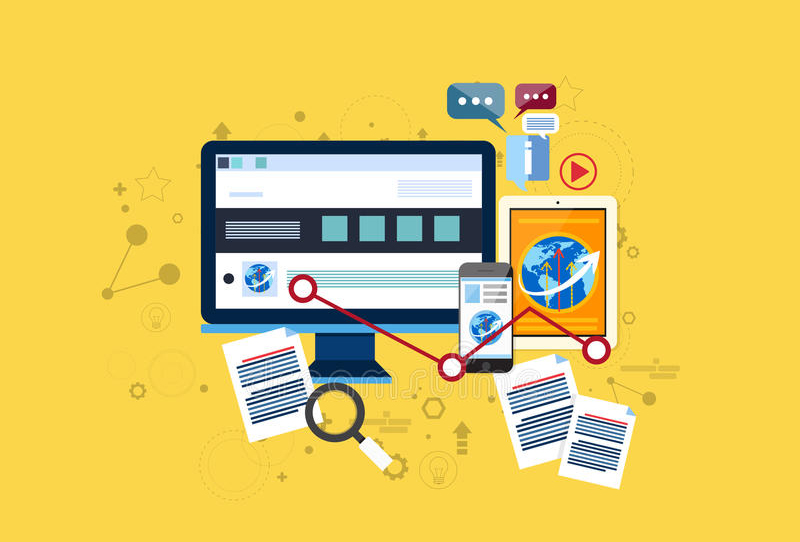
Unlocking Credibility and Professionalism: The Power of White-Label Solutions for Seamless Marketing Success
Introduction
White-label solutions are the unsung heroes of business success, offering products or services that companies can rebrand and sell as their own. It’s like having a tailor-made suit without the bespoke price tag.
In the bustling world of marketing, credibility is the currency that builds trust, and professionalism is the suit that makes a lasting impression. In this blog, we’ll delve into how a top white-label services agency can be your secret weapon in achieving both.
Our goal here is simple – to navigate the landscape of white-label solutions, understand their inner workings, and discover how they can elevate your marketing game. Think of it as your roadmap to a more credible and professional business presence.
Understanding White-Label Solutions
White-label solutions are like the backstage magicians of business, providing ready-made products or services that you can put your own label on. From software to coffee mugs, these solutions save you the hassle of starting from scratch.
Think of your favorite store-brand snacks or no-name smartphones – chances are, they’re white-labeled. Even big players do it. You might be surprised to know that your go-to products might just be twins with different outfits.
Picture this: You find a white label marketing agency , select a product or service they offer, slap your logo on it, and it’s ready for market. It’s the express lane to getting quality offerings without the R&D headaches.
Now, let’s uncover why this matters in the world of marketing.
The Role of Credibility in Marketing
In the marketing arena, trust is the golden ticket. Picture this – you’re more likely to buy a product from a company you trust, right? Well, that trust is built on credibility. It’s like the foundation of a sturdy house; without it, everything might come crashing down.
Building credibility is like climbing a mountain – challenging but rewarding. In the digital age, where information is abundant, standing out and proving your worth is no small feat. Consumers are wary of businesses that overpromise and underdeliver.
Enter white-label solutions, the unsung heroes of credibility. By partnering with a reputable white-label provider, businesses can offer products and services that have a proven track record. It’s like having a trustworthy sidekick – they’ve got your back.
Professionalism in Marketing
Professionalism in marketing isn’t just about wearing suits and ties. It’s about presenting your brand in the best possible light. Think of it as the polished exterior of a luxury car – it’s not just about what’s under the hood; it’s about the entire package.
In marketing, professionalism involves everything from your website design to your customer interactions. It’s the language you use, the imagery you project, and the overall vibe you give off. Consumers are drawn to businesses that exude professionalism because it signals reliability.
A professional presentation creates a positive first impression, and as we know, first impressions are hard to change. Consumers are more likely to engage with a brand that appears organized, reliable, and serious about what they do. It’s the difference between window shopping and confidently walking into a store.
Now, here’s where the magic happens – by incorporating white-label solutions into your marketing strategy, you’re adding a touch of professionalism without the hefty price tag. It’s like upgrading to a business-class experience without breaking the bank.
Benefits of White-Label Solutions for Marketing Success
- Cost-Effectiveness and Budget Optimization:
Let’s talk about the green stuff – money. White-label solutions can be a game-changer for your budget.
Think about it – instead of investing time and money in building something from scratch, you’re leveraging existing solutions. It’s not just cost-effective; it’s budget optimization at its finest. Every dollar saved is a dollar that can be reinvested where it matters most.
- Time Efficiency and Rapid Implementation:
Time is of the essence in the fast-paced world of marketing. The beauty of white-label solutions lies in their plug-and-play nature.
Rapid implementation means you can stay ahead of the competition. No more waiting for the stars to align – white-label solutions let you seize opportunities when they arise. It’s the secret sauce for staying agile and responsive in the ever-evolving business landscape.
- Access to Expertise and Industry Know-How:
Knowledge is power, and white-label solutions give you access to a powerhouse of expertise. Many providers are specialists in their field, offering solutions crafted by seasoned professionals.
It’s like having a team of experts on standby without the hefty payroll. From cutting-edge technology to industry insights, white-label solutions open doors to knowledge that can elevate your marketing game. No need to reinvent the wheel – just roll with the experts.
- Scalability for Growing Businesses:
The dream for any business is growth, and white-label solutions are your growth partners. Research by Harvard Business Review found that businesses using white-label products experience 37% faster revenue growth. It’s like having a turbo boost for your scalability.
How to Choose the Right White-Label Partner
- Researching and Evaluating Potential Partners:
Finding the perfect white-label partner is like dating – you need to know them inside out. Start by doing your homework. Check reviews, testimonials, and case studies. Dive into their track record – have they been consistent? Are their previous partnerships success stories or cautionary tales?
- Considering Industry Specifics and Expertise:
One size doesn’t fit all, especially in the business world. Your white-label partner should be a tailored fit for your industry. It’s not just about what they offer but how well they understand your niche.
Think of it this way – if you’re in the tech game, partnering with a provider who knows the ins and outs of your field is like having a co-pilot who speaks the same language. Shared expertise makes the journey smoother.
- Assessing Scalability and Long-Term Compatibility:
The beauty of white-label solutions is their scalability. But, before you commit, ensure your partner can grow with you. Ask about their capacity, infrastructure, and long-term plans.
Common Challenges and Solutions in White-Label Marketing
- Overcoming Potential Hurdles:
No journey is without bumps, and white-label marketing is no exception. Identifying potential challenges is the first step. Whether it’s a hiccup in product quality or a misalignment in branding, face them head-on.
It’s like navigating a maze – sometimes, you might hit dead-ends, but with a clear strategy and adaptability, you can find alternative routes. Overcoming hurdles is about being prepared and staying flexible.
- Strategies for Successful Implementation:
Success isn’t just about choosing the right partner; it’s also about implementation. Develop a robust strategy for incorporating white-label solutions into your business. This includes a comprehensive rollout plan, employee training, and customer communication.
- Continuous Improvement and Adaptation:
White-label marketing isn’t a one-and-done deal. It’s an ongoing process. Regularly assess performance, gather feedback, and be ready to adapt.
Key Takeaways
White-label solutions aren’t just about products; they’re about unlocking credibility and professionalism. In a world where trust is gold and first impressions matter, they offer a shortcut to building a brand that stands tall. It’s not just a business strategy; it’s a journey towards lasting success.

















